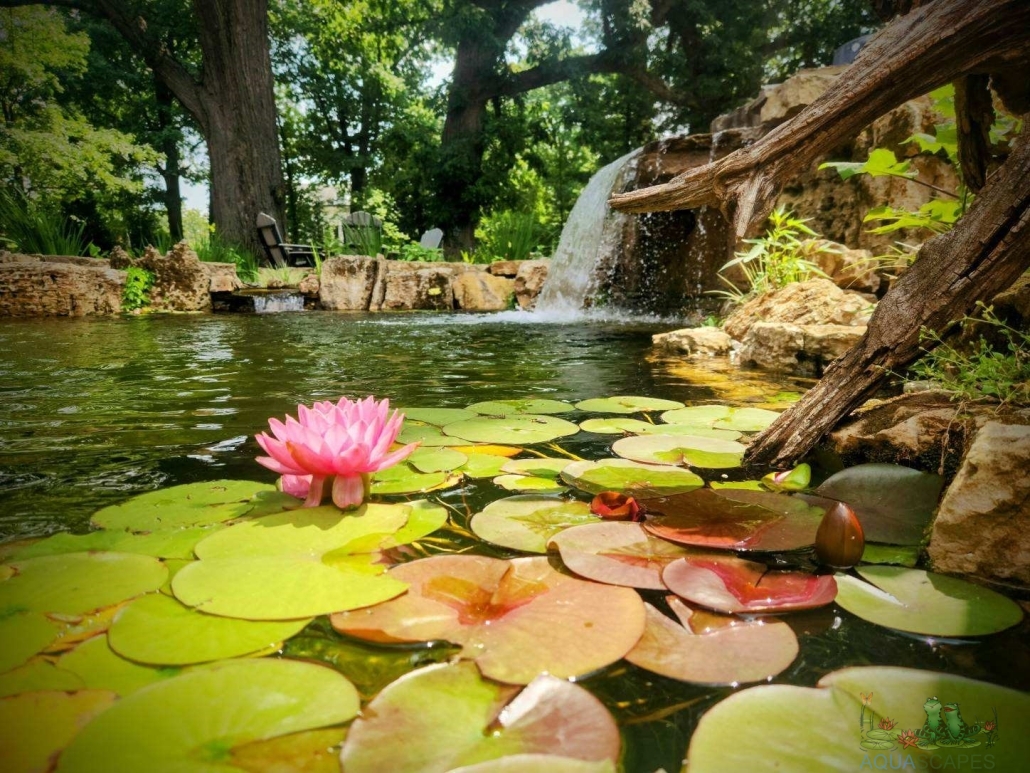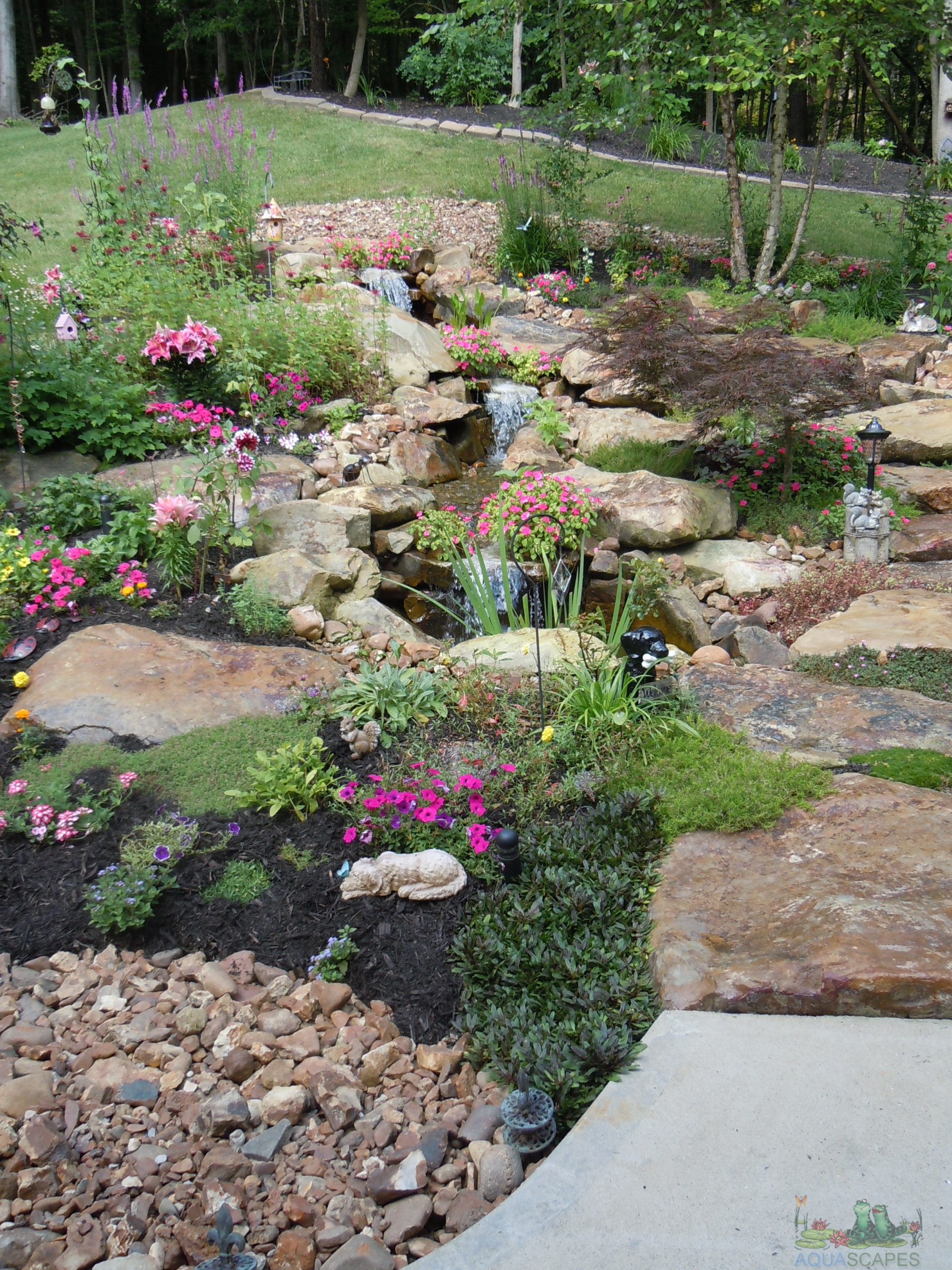Water gardens are a captivating addition to any outdoor space, offering a harmonious blend of natural beauty and tranquility. A well-designed water garden not only enhances the aesthetics of your landscape but also creates a serene oasis where you can unwind and connect with nature. Among the critical aspects of crafting a stunning water garden, pond design takes center stage. In this comprehensive guide, we will explore a variety of pond design ideas that can elevate your water garden to new heights. From size and shape considerations to plant and wildlife choices, we’ll cover it all.
Section 1: Choosing the Right Pond Size and Shape
1.1 Pond Design Size
- Consider the available space: Assess your outdoor area to determine the maximum pond size that can fit comfortably.
- Balance with surroundings: Ensure that the pond’s size complements the scale of your landscape; avoid making it appear disproportionate.
1.2 Pond Design Shape
- Natural curves: Organic, irregular shapes often mimic nature and create a more relaxed atmosphere.
- Formal designs: If you prefer a structured look, consider geometric shapes like rectangles, squares, or circles.
Section 2: Pond Construction Materials
2.1 Liner Options
- Rubber liners: Flexible and durable, rubber liners are a popular choice for their versatility.
- Preformed ponds: These offer ease of installation and a uniform shape but may limit creativity in design.
2.2 Edging Materials
- Natural stone: Bluestone, slate, or granite can create a rustic and harmonious look with the surrounding landscape.
- Concrete pavers: These provide a more polished appearance and are available in various colors and textures.
Section 3: Water Features and Enhancements
3.1 Waterfalls and Streams
- Cascading beauty: Incorporate waterfalls and streams for a dynamic and soothing element in your water garden.
- Consider natural placement: Mimic the way water naturally flows in nature for a more authentic look.
3.2 Fountains
- Focal point: Fountains can serve as eye-catching centerpieces and add the soothing sound of falling water.
- Styles and sizes: Choose from a variety of fountain designs, from traditional to modern, based on your garden’s aesthetic.
3.3 Lighting
- Nighttime magic: Install underwater and landscape lighting to create a captivating atmosphere after dark.
- LED technology: Energy-efficient LED lights offer versatility in color and intensity.
Section 4: Plant Selection for Your Pond Design
4.1 Aquatic Plants
- Submerged plants: Oxygenators like Anacharis help maintain water quality and provide habitat for aquatic life.
- Floating plants: Water lilies and lotus add beauty while providing shade and improving water quality.
- Marginal plants: Cattails, rushes, and water irises thrive at the water’s edge, blending the pond with the landscape.
4.2 Surrounding Plants
- Garden integration: Choose perennial and native plants that harmonize with your water garden’s style.
- Wildlife attraction: Plants like milkweed can attract butterflies and other pollinators to your garden.
Section 5: Pond Maintenance and Health
5.1 Filtration Systems
- Mechanical filters: Remove debris and particles from the water to keep it clear.
- Biological filters: Promote beneficial bacteria that break down organic matter and help maintain water quality.
5.2 Regular Cleaning
- Skim the surface: Use a net to remove debris and fallen leaves.
- Water testing: Periodically test water quality and adjust chemical levels as needed.
5.3 Wildlife Considerations
- Balance the ecosystem: Encourage beneficial wildlife like frogs and dragonflies while deterring pests like mosquitoes.
- Netting options: Consider using nets to protect fish from predatory birds and raccoons.
Section 6: Incorporating Wildlife
6.1 Fish Selection
- Koi and goldfish: These colorful and hardy fish are popular choices for water gardens.
- Native species: Consider introducing native fish to support local ecosystems.
6.2 Attracting Wildlife
- Habitat diversity: Create various habitats with rocks, logs, and aquatic plants to attract diverse wildlife.
- Birdhouses and feeders: Attract birds to your and feeders, providing a delightful avian presence.
6.3 Frogs and Amphibians
- Frog-friendly environment: Build shallow areas with aquatic plants for frog habitats.
- Natural predators: Frogs can help control insect populations around your pond.
Section 7: Adding Personal Touches to your Pond Design
7.1 Garden Accents
- Statues and sculptures: Choose garden art that complements your water garden’s theme.
- Seating areas: Create a tranquil space for relaxation by adding benches or stone seating.
7.2 Hardscape Elements
- Pathways and bridges: Enhance accessibility and create visual interest with pathways and decorative bridges.
- Garden arches: Add vertical elements that frame your water garden and offer climbing opportunities for vines.
Section 8: Seasonal Considerations
8.1 Winter Preparation
- De-icing equipment: Install pond heaters or aerators to prevent ice buildup and maintain oxygen levels for fish.
- Pruning and cleaning: Trim back aquatic plants and remove debris before winter sets in.
8.2 Spring Maintenance with Pond Design
- Clean and refresh: Start the season by cleaning filters and checking equipment.
- Plant care: Divide and repot aquatic plants as needed, and fertilize to encourage healthy growth.
Section 9: Sustainable Practices
9.1 Water Conservation
- Rainwater harvesting: Collect rainwater for pond use to reduce reliance on municipal water sources.
- Use of drought-resistant plants: Select plants that require less water to maintain a sustainable water garden.
9.2 Eco-Friendly Products to add to your Pond Design
- Natural additives: Use organic pond treatments to maintain water quality without harming aquatic life.
- Recycled materials: Opt for sustainable hardscape elements and pond liners made from recycled materials.
A well-designed water garden with thoughtful pond design ideas can transform your outdoor space into a haven of tranquility and natural beauty. Whether you prefer a formal, structured pond or a more organic, free-flowing design, there are endless possibilities to create a water garden that suits your taste and lifestyle.
Remember that water gardens are not just aesthetic additions; they can also support local ecosystems, attract wildlife, and promote a sense of serenity and well-being. By incorporating the right pond size and shape, selecting suitable construction materials, enhancing the water features, choosing the right plants, and practicing sustainable maintenance, you can create a water garden that thrives for years to come.
So, roll up your sleeves, get creative, and embark on the journey of designing your own stunning water garden. Let the soothing sound of flowing water and the vibrant colors of aquatic plants bring harmony and joy to your outdoor space. Your water garden will not only be a reflection of nature’s beauty but also a testament to your passion for creating a serene and sustainable oasis.
Check out our store for all your water gardening needs! Aquascape products are Aquascape Inc. Certified.
Thanks for reading at Meyer Aquascapes! We hope you’ve enjoyed our post on garden pond design. Please leave a comment below if you liked it or have any questions. We’d love to hear from you! Thanks for stopping by!



